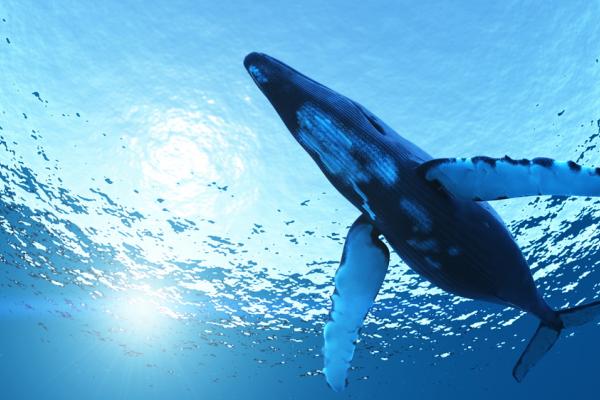“A blue whale’s heart is as big as a Volkswagen Beetle,” I told a group of wide-eyed, open-mouthed second graders at my school. “It is so big, you could walk around inside of it.”
I was bringing SOLE to my classroom, the Self-Organized Learning Environment advocated by Sugata Mitra in his TED Talk The Child-Driven Education and explained in the SOLEToolkit How to Bring Self-Organized Learning Environments to Your Community.
I created my SOLE space by providing one desktop computer per four students, a whiteboard to write questions on, and paper and pens for students to take notes for their sharing at the end of SOLE.
Then I asked a big question — “Why does a blue whale have such an enormous heart?” — and I let the adventure begin. My students began their investigations.
After 40 minutes, they shared their discoveries.
“Blue whales swim all over the world,” said Ki’ara, “So they need a gargantuan heart to be their motor.”
“Blue whales can call to each other over almost a thousand miles,” said Heavenly. “They need a big heart to talk to each other.”
“They swim together in pairs,” said Amare, “So they need huge hearts to care for each other.”
“Yeah,” said Isaac, “That’s true … it takes a huge heart to care for somebody.”
“Kids who are nice to me on the playground must have a big heart like a blue whale,” added Aydan. “And people who are mean must have small hearts.”
“Hmmm,” I said. “How can we have big hearts for each other instead of small hearts?”
We made a list:
1. Everybody can play with everybody on the playground — nobody gets left out.
2. We can use words to build people up instead of to tear them down.
3. If you say one mean thing to someone, you can say three nice things about that person.
4. You can sit beside someone who is different from you at lunch and become friends.
5. You can put your arm around someone who is being bullied.
I like to teach science, to watch children wonder through the world, to hear them talk about things as small as atoms and as large as blue whales.
I also like to teach empathy, to model ways we can care for each other and other living things.
This SOLE lesson took a beautiful turn when Amare connected the heart of the blue whale to community and to caring.
Dr. Perri Klass, in her small essay for The New York Times titled Understanding How Children Develop Empathy, writes about the importance of modeling sympathy and compassion to children so those things are part of their experience long before they know the words.
Nine out of 10 families around my school, however, live in a grinding, destructive poverty that makes it difficult to model sympathy and compassion, to nurture community and caring. My students often come to school knowing more about the survival of the fittest than the survival of the kindest.
Yet here were my 7- and 8-year-olds working together in a community and talking about caring for each other, exploring ways we can have big hearts instead of small hearts for each other.
On that day, the blue whale and the second graders modeled sympathy and compassion for all of us.
This SOLE lesson brought heart to my classroom.
Trevor Scott Barton is an elementary school teacher in Greenville, SC. He is a blogger for the Teaching Tolerance project of the Southern Poverty Law Center.
Photo: TsuneoMP / Shutterstock
Got something to say about what you're reading? We value your feedback!
